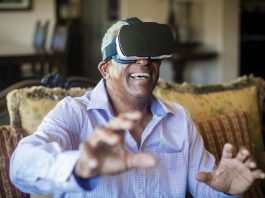A study from the University of Cincinnati has shown that a targeted therapy, often used to treat cancers, may be beneficial in treating neurological diseases.
A new study, published in EBioMedicine, has revealed that the effect of SapC-DOPS, a therapy delivery system using microscopic components, may be able to offer targeted treatment without harming healthy cells.
In addition to potentially treating Parkinson’s disease, this treatment could also benefit patients suffering from Gaucher disease, “a serious and rare genetic condition in which a type of lipid accumulates in cells and certain organs. The disorder can cause bruising, fatigue, anaemia, low blood platelet count and enlargement of the liver and spleen, as well as poor co-ordination, seizures and cognitive problems in some patients; it is caused by a hereditary deficiency of a certain enzyme,” says Qi, who is a corresponding author on the study.
Qi continued: “Patients need enzyme replacement therapy to treat this condition, but a major limitation of FDA-approved enzyme replacement therapy is failure to cross the blood-brain barrier in the body. Therefore, the treatments available are only effective for patients who have Gaucher’s affecting their internal organs, like their livers and spleens, but not their brain or nervous system.
“[Certain] nanovesicles have the ability to cross the blood-brain barrier and selectively target brain tissue, providing a biological vehicle for delivering the enzyme replacement therapy.”
What is SapC-DOPS?
SapC-DOPS is the combination of the cell protein SapC and the phospholipid DOPS. This combination, assembled into tiny cavities, can selectively target cells and deliver therapies while avoiding healthy tissue.
“In this study, we showed that the nanovesicle was able to deliver the enzyme to the necessary tissues in animal models, especially the brain… This novel therapeutic approach corrects the deficiency of the enzyme in central nervous system cells and tissues and is efficient in reducing inflammation and neurological issues in animal models with (some types of) Gaucher disease,” says Ying Sun, research professor in the UC Department of Pediatrics.
“Our study presents a new targeted use for our nanovesicle and provides a new strategy for treating this type of Gaucher disease,” Qi adds. “This is the tip of the iceberg when thinking about applications and it could mean promising treatments for other neurologic conditions.”









